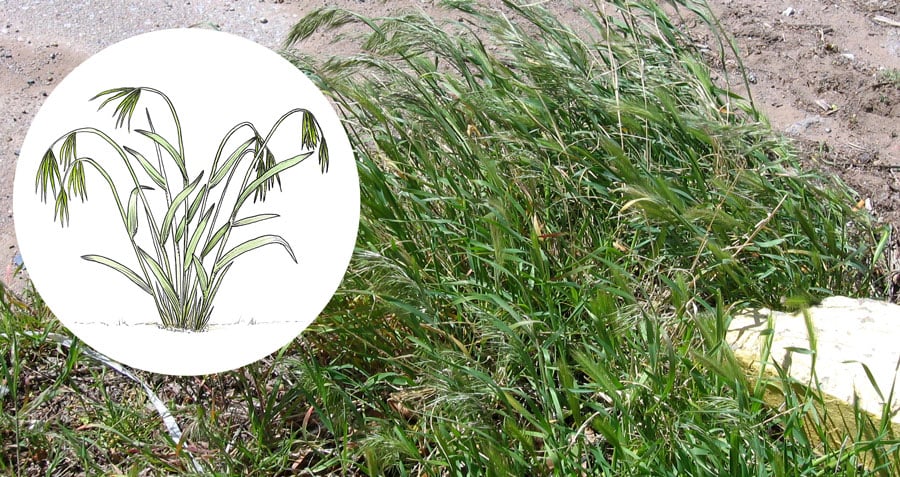Spring is here, and so are the grasses and flowers and plants springing to life. Before we know it, we'll be in the heat of summer, and your dog will get to do what he or she loves best: running around in the fields or the foothills. If you're like most dog owners in our area, you're familiar with the after-playtime cleanup, which invariably involves picking some nasty clingers out of your dog's fur. The most common clinger in our area is cheatgrass or Bromus tectorum.
Most likely, you already know the frustration of finding these tenacious plants in your pet's hair (not to mention in your carpet, socks and clothes). Not only are they annoying, they can also endanger your dog's health. Here's what you need to know to protect your dog from this summer threat.
The 411 on Cheatgrass
Cheatgrass is more than a nuisance—it's a serious problem for dogs, wildlife, and our landscapes. Cheatgrass is a prolific spreader, using its barb-like seeds to grow just about anywhere. It has a short lifecycle and is a winter annual, which means that it reseeds every fall when the temperatures drop. It dries out in our hot summers--usually by mid-June--and leaves ripe fodder for wildfires. It can compete with (and win over) native plants and invade a landscape with its tenacity.
When your pup brings home a cheatgrass seed (or 500), they're at risk for more than simply spreading this nasty weed. Seeds can work their way into any part of your pet's body and cause not just pain but even life-threatening infections if you don't catch them early enough. Cheatgrass seeds can get stuck in your pet's fur, skin, eyes, nose, ears, or mouth. They've even been found in dogs' lungs.
Protecting Your Dog
Here's how to protect your dog from cheatgrass this summer.
- Groom thoroughly and often: Trim your dog's fur down regularly in the spring and summer. This will decrease the likelihood that they'll pick up seeds. Grooming is especially important if you have a long-haired breed.
- Clean up after summer play: If you've been on a long hike or walk with your dog, immediately check your dog's body and fur for seeds. Pay special attention to the paws, ears, nose, and mouth.
- Know the signs: Watch for signs of irritation in your dog such as pawing at ears or eyes, tilting or shaking his head, tearing, squinting, discharge, coughing, or swallowing repeatedly. Again, the most common areas of cheatgrass infection will be the ears, mouth, nose, and paws.
If you suspect that your dog has a cheatgrass seed lodged somewhere in his or her body, call us right away. We can find and remove seeds before they seriously harm your pet. If you have any questions, feel free to contact us.
